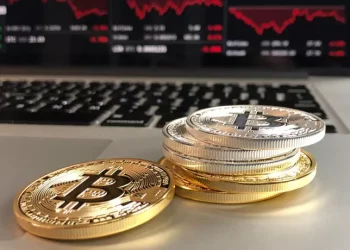According to Golden Finance, Circle, a key player in the stablecoin issuance field, has made its internal profit model public after successfully listing in the United States, which has drawn widespread attention both within and outside the industry. Data shows that in the past year, 98% of Circle’s revenue astonishingly came from investment income generated by reserve assets.
The stablecoin issuance mechanism requires reserve assets to have the characteristics of high quality, short term and high liquidity. In this regard, Circle allocates its main reserve assets to short-term bonds such as US Treasury bonds and cash deposits. According to the disclosed data, the return rate of reserve assets has been within the range of 0.14% to 5.17% over the past three years. This data profoundly indicates that at the current stage, Circle’s revenue momentum is highly dependent on the interest rate trends of assets such as short-term bonds. The monetary policy adjustments of the Federal Reserve have a huge impact on it. For instance, in 2024, for every 25 basis point interest rate hike by the Federal Reserve, Circle can earn an additional income of approximately 89.9 million US dollars. This close connection implies that once the market interest rate environment reverses, Circle’s revenue may face the risk of a significant shrinkage.
Circle is not completely at ease in the market competition. A potential major market competition risk is quietly approaching. As the cryptocurrency market gradually develops and evolves, if a sovereign institution gets involved in the stablecoin issuance field in the future, it is highly likely to quickly capture a certain share in the market by virtue of the “zero counterparty risk” brought by its national credit endorsement. In contrast, although Circle has certain advantages in terms of compliance, such as transparent reserves (over 90% being US debt and cash) and passing strict audits, meeting regulations like the EU’s MiCA, there is still a certain gap when it comes to sovereign credit. From the current market perspective, USDC issued by Circle, as the world’s second-largest stablecoin, has a circulation of over 60 billion US dollars, accounting for 25% to 30% of the market, second only to USDT (67%). If sovereign stablecoins enter the market, the market share of USDC is bound to be impacted.
Facing such a severe competitive situation, analysts generally believe that Circle needs to take proactive actions to expand its crypto ecosystem. In terms of expanding its revenue sources, Circle can make efforts in multiple directions. First, vigorously develop institutional service business, provide stablecoin payment, cross-border settlement and other services for enterprises, and charge handling fees. At present, Visa has adopted USDC for cross-border payment and settlement, and this field has huge potential. Secondly, it ventured into the business of tokenized assets (RWA), tokenizing real assets such as gold and real estate, using USDC as the medium of exchange, and extracting service fees from it. The entry of institutions such as Fidelity and PayPal indicates that the RWA market is expected to reach a trillion-dollar scale in the future. Thirdly, relying on its own advantages in compliance technology, reserve management and other aspects, it exports technology to other stablecoin issuers and charges technology licensing fees. Furthermore, in terms of central bank digital currency (CBDC) infrastructure, if Circle can leverage its technological accumulation to provide services to central banks around the world, it will open up a vast space for revenue growth.
In terms of ecosystem construction, Circle should further strengthen its relationships with existing partners, such as its cooperation with the cryptocurrency exchange Coinbase. Although it needs to share part of the interest income, it has expanded the issuance channels. At the same time, actively seek cooperation with more emerging blockchain projects, deeply integrate USDC into various decentralized application scenarios, and enhance its usage frequency and stickiness in the crypto ecosystem. In addition, increase investment in the research and development of cross-chain technology. By enhancing the circulation efficiency of USDC among different blockchain networks, attract more developers and users to choose USDC as the base currency for cross-chain transactions.
After Circle went public, the high concentration of its profit model coexisted with potential competitive risks. Only by actively expanding the crypto ecosystem, diversifying income sources, and enhancing one’s core competitiveness in the cryptocurrency market can one remain invincible in the fierce market competition and achieve sustainable development.
Related Topics:
















